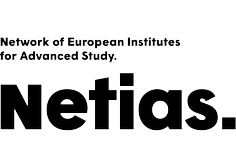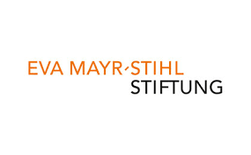Prof. Dr. John Golbeck
CV
Dr. John Golbeck is Professor of Biochemistry and Biophysics in the Department of Biochemistry and Molecular Biology, and Professor of Chemistry in the Department of Chemistry at The Pennsylvania State University. He received his B.S. in Chemistry from Valparaiso University, and his Ph.D. in Biological Chemistry from Indiana University under the supervision of Prof. Anthony San Pietro. His postdoctoral studies were carried out at Martin Marietta Laboratories, Baltimore, MD, with Dr. Bessel Kok. Prof. Golbeck spent sabbatical leaves at Rensselaer Polytechnic Institute (1984), at the Centre d’Etudes Nucl´eaires de Saclay (1992), and at the Freie Universität, Berlin (2003). He is currently a Fellow of the Freiburg Institute for Advanced Studies in Germany (summer, 2015). His research interests involve the protein factors that confer thermodynamic properties to organic and inorganic cofactors, the structural makeup of Type I reaction centers from anaerobic bacteria, the composition of electrically conductive bacterial nanowires, and the modification of Photosystem I to produce hydrogen. Prof. Golbeck is a member of the American Society for Biochemistry and Molecular Biology, the Biophysical Society of America, and the International Society for Photosynthesis Research, where he holds the position of Treasurer.
Selected Publications
- Pirbadian, S., Barchinger, S. E., Leung, K. M., Byun, H. S., Jangir, Y., Bouhenni, R. A., Reed, S. B., Romine, M. F., Saffarini, D. A., Shi, L., Gorby, Y. A., Golbeck, J. H., and El-Naggar, M. Y. (2014) Shewanella oneidensis MR-1 nanowires are outer membrane and periplasmic extensions of the extracellular electron transport components, Proc Natl Acad Sci USA 111, 12883-12888.
- Saboe, P. O., Lubner, C. E., McCool, N. S., Vargas-Barbosa, N. M., Yan, H., Chan, S., Ferlez, B., Bazan, G. C., Golbeck, J. H., and Kumar, M. (2014) Two-Dimensional protein crystals for solar energy conversion, Adv Mater 26, 7064-7069.
- Gorka, M., Schartner, J., van der Est, A., Rogner, M., and Golbeck, J. H. (2014) Light-mediated hydrogen generation in Photosystem I: attachment of a naphthoquinone-molecular wire-Pt nanoparticle to the A1A and A1B sites, Biochemistry 53, 2295-2306.
- Srinivasan, N., Santabarbara, S, Rappaport, F., Carbonera, D., Redding, K., van der Est A. and Golbeck, J. (2011) “Alteration of the H-bond to the A1A phylloquinone in Photosystem I: influence on the kinetics and energetics of electron transfer”, J. Phys. Chem. B, 115, 1751-1759.
- Lubner, C. E., Applegate, A. M., Knörzer, P., Ganago, A., Bryant, D. A., Happe, T., and Golbeck, J. H. (2011) Solar hydrogen-producing bionanodevice outperforms natural photosynthesis, Proc. Natl. Acad. Sci. USA, 108, 20988-20991.
FRIAS Research Project
Single-Crystal ENDOR Studies of the Heliobacterial Reaction Center
This project concerns a short-term (2 month) collaborative study between Prof. John Golbeck (Penn State University) and Prof. Stefan Weber (University of Freiburg). The first objective is the determination of the proton hyperfine tensors of P800+ by EPR/ENDOR spectroscopy on single crystals of the heliobacterial reaction center. This will be accomplished by studying the dependence of the ENDOR spectrum of the P800+ cation radical on the orientation of the crystal in the magnetic field. The proton hyperfine couplings from three of the methyl groups (positions 2, 7 and 12) attached to the BChl g ring are expected to be resolved, thereby allowing their principal values and corresponding axes orientations to be determined. A second objective is study of the conversion of BChl g to Chl a on the electronic properties of P800+. When the heliobacterial reaction center is exposed to light and oxygen, the 20 molecules of BChl g are spontaneously converted to Chl a. We will use use high-field EPR/ENDOR spectroscopy to decide whether the spin is localized on the BChl g molecule or on the Chl a molecule. From the orientation of the hyperfine tensors of the three methyl groups with respect to the crystallographic axis, the orientation whichever possesses the spin, the BChl g or Chl a molecule, can be determined. This project will provide the unprecedented opportunity to study the conversion of a homodimeric BChl g special pair to a heterodimeric BChl g/Chl a special pair all within the same protein framework.





